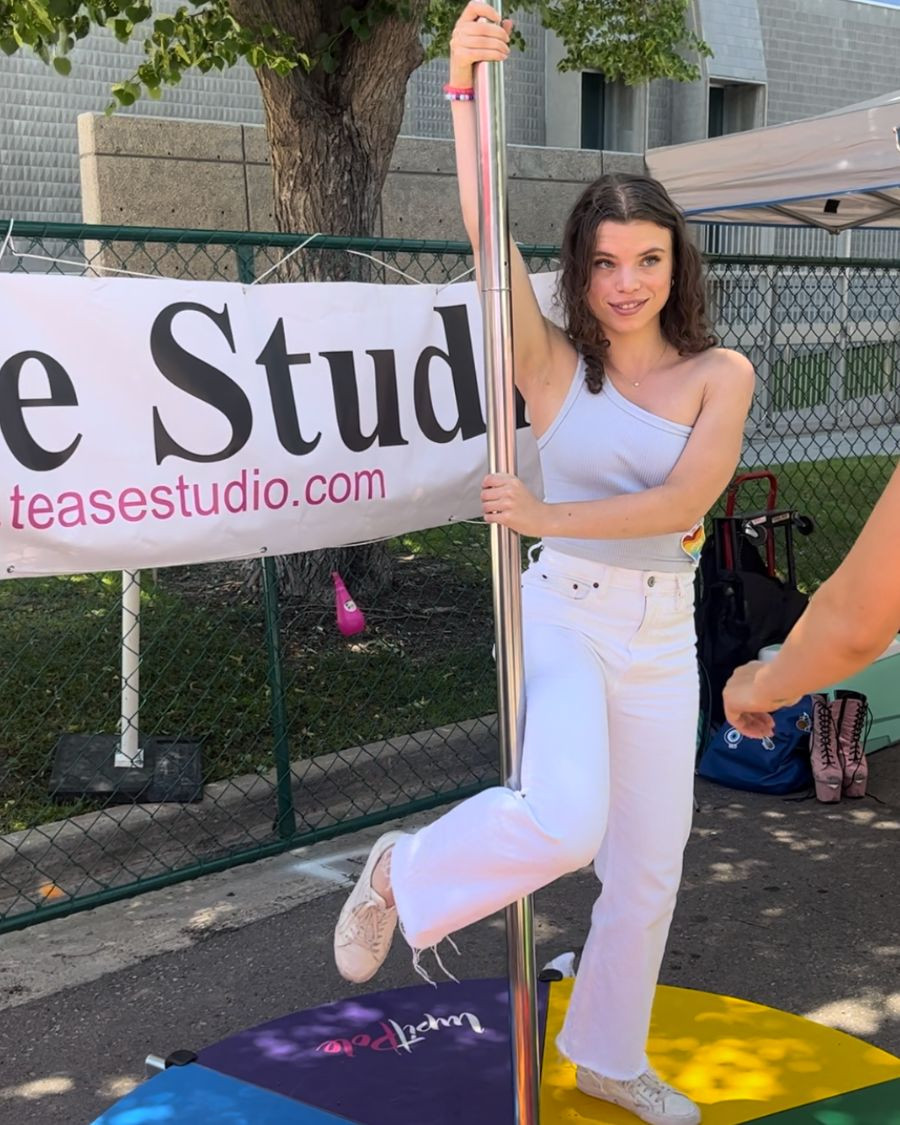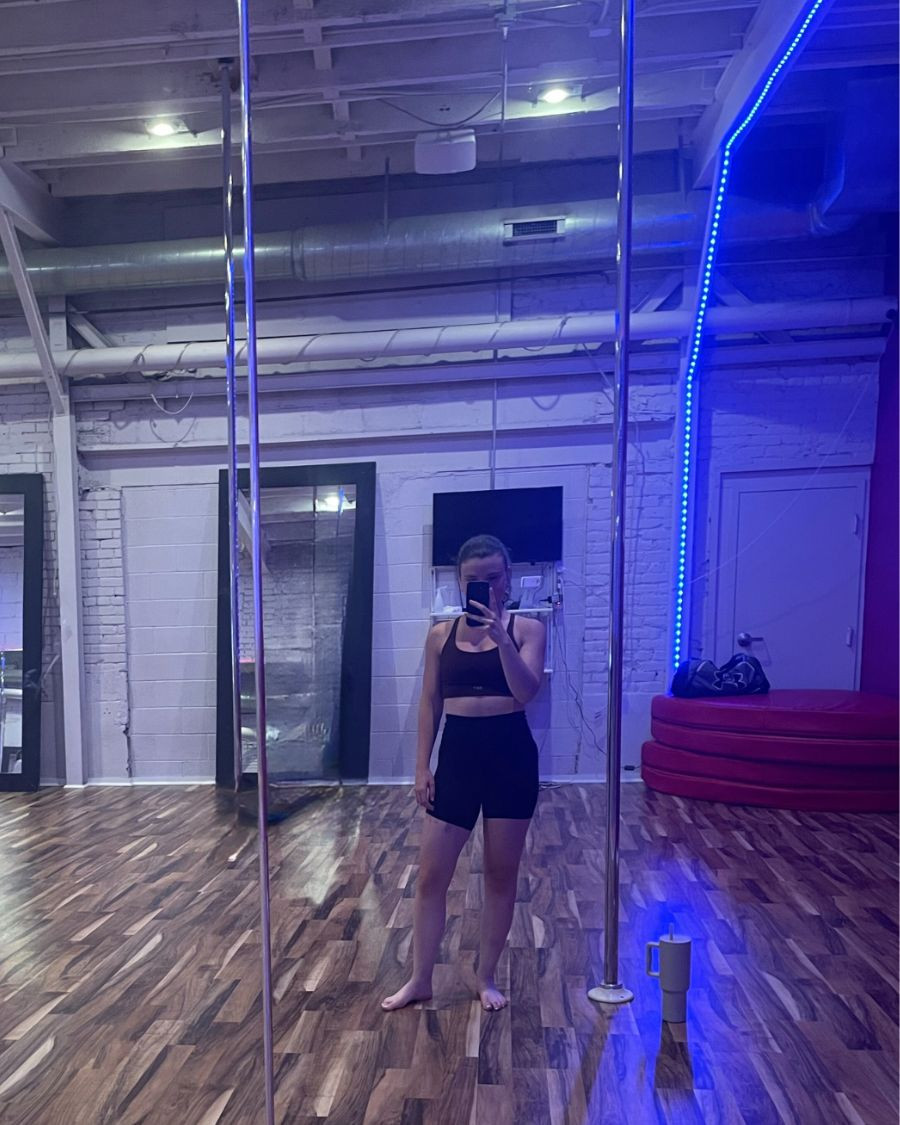Maintaining workout motivation can be a challenge, and for many, including self-proclaimed ClassPass enthusiasts, the key is often variety. Switching between Pilates, bootcamp, spin, and other fitness activities keeps things interesting and the body engaged. However, some forms of physical activity remain unexplored by even the most adventurous exercisers. Pole dancing, often perceived as intimidating or outside the mainstream, is one such example. This article delves into a personal three-week journey into beginner pole dancing classes, exploring the physical and mental benefits of this unique form of Dancing Exercise. The experience highlights not only unexpected arm strength gains but also a significant boost in confidence.
 Stylish woman in spring fashion advertising Wantable subscription box for dancing exercise enthusiasts
Stylish woman in spring fashion advertising Wantable subscription box for dancing exercise enthusiasts
First Steps into Pole Dancing Exercise: Initial Impressions
The initial spark of interest in pole dancing exercise ignited at a Denver Pride event, where a local pole studio hosted a pop-up. The opportunity to try a spin on the pole was instantly captivating, leading to immediate sign-up for a beginner class. Beyond the allure of a novel physical challenge, the concept of a “sexy workout” held a deeper appeal. For many young women, embracing and owning one’s sexuality can be complex, often influenced by external pressures. In contrast, exercise is typically a personal endeavor, focused on self-improvement and well-being. The idea of merging sensuality with physical exertion in a pole dancing workout presented an opportunity to reclaim sexuality as a personal experience, divorced from external expectations.
 A woman learning pole dancing exercise moves in a beginner class
A woman learning pole dancing exercise moves in a beginner class
Entering the first pole dancing exercise class was accompanied by a degree of nervousness. Fortunately, the class was specifically designed for first-timers, creating a welcoming environment for novices. The session commenced with familiar upper-body warm-ups, including head rolls, arm circles, and “sexy push-up” variations. Basic pole techniques were introduced, such as walking around the pole on tiptoes and understanding spin dynamics. A nostalgic moment arose at the class’s end when the instructor dimmed the lights and encouraged free practice to music, reminiscent of childhood ballet free dance sessions. Subsequent classes over the next few weeks maintained a similar structure, fostering a supportive learning environment. Despite varying instructors, seeking assistance with choreography was met with encouragement, never judgment. Class sizes varied, leading to partnered learning in busier sessions and more individualized guidance in smaller groups, enhancing the overall dancing exercise learning curve.
Pole Fitness: A Comprehensive Dancing Exercise Workout
For those seeking a remarkably effective shoulder and back workout, pole dancing exercise is an unexpectedly potent option. The fundamental act of stabilizing and maneuvering oneself on a vertical pole demands considerable upper body strength. The initial class left the participant with noticeable shoulder soreness and significant back muscle engagement, highlighting the intensity of this dancing exercise. Over the three-week period, a tangible increase in upper body strength became evident.
 Participants in a pole dancing exercise class practicing spins and poses
Participants in a pole dancing exercise class practicing spins and poses
Similar to dance and Pilates, a key advantage of pole dancing exercise lies in its engagement of often-underutilized muscle groups. The movements frequently involve fine motor skills rather than the large push-and-pull motions typical of gym workouts. This emphasis on nuanced movements contributes to improved mobility and reduced joint pain. Beyond upper body benefits, pole dancing exercise presents a unique challenge through the constant demand for relevé. The common practice of pole dancers wearing heels is not merely aesthetic; it functionally reduces calf strain by maintaining a consistent tiptoe position. Like many dance forms, pole dancing exercise inherently promotes flexibility and posture, aspects often overlooked in conventional workout routines. The holistic nature of dancing exercise in pole fitness delivers a well-rounded physical conditioning experience.
Confidence and Empowerment Through Dancing Exercise
The journey through pole dancing exercise was not without moments of self-consciousness and discomfort. The act of exploring a creative, sensual, and powerful self within a group of unfamiliar individuals and an instructor pushed vulnerability boundaries. Despite these mental and physical challenges, the experience was overwhelmingly enjoyable, especially for a low-impact workout. Allowing oneself to become immersed in the movements and music, rather than overthinking, unlocked the true enjoyment of learning and practicing spins. The carefully curated music and supportive, close-knit studio community contributed significantly to a positive atmosphere. The consistent thrill of mastering new skills in each class provided a refreshing sense of accomplishment through dancing exercise.
It’s important to acknowledge that pole dancing exercise extends beyond recreational fitness. Some classmates were professional pole dancers, and pole dancing is integral to sex work. In professional contexts, it is physically demanding work, requiring athleticism and dedication. For the author, pole dancing exercise became a catalyst for connecting with a previously untapped physically expressive dimension. Instructors encouraged self-recording during free dance segments, creating a unique record of progress and personal expression. Reviewing these videos offered not only a visual representation of skill development but also an unexpected source of self-admiration. These private dance recordings became a personal affirmation, reinforcing the empowering nature of dancing exercise and its capacity to cultivate self-confidence and body positivity.

